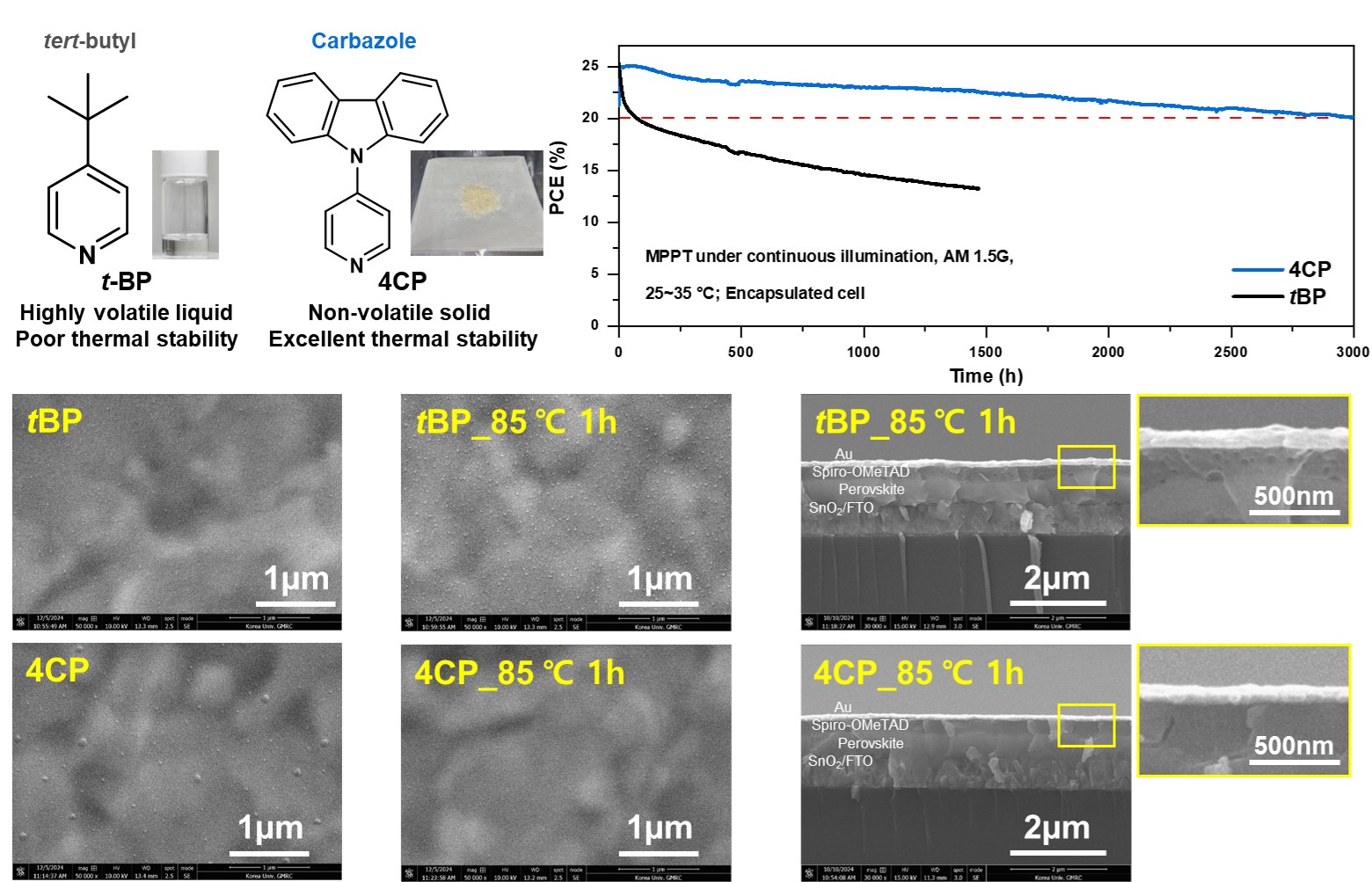Abstract
A groundbreaking perovskite solar cell boasting over three times the lifespan of conventional devices has been developed, thanks to a novel solid-state additive that replaces traditional liquid components known to compromise stability.
A research team led by Professors Changduk Yang and Seung-Jae Shin from the School of Energy and Chemical Engineering at UNIST, together with Professor Hanul Min from Korea University, announced that they successfully integrated a new solid additive-4-(N-carbazolyl)pyridine (4CP)-into perovskite solar cells. This innovation achieved a remarkable power conversion efficiency of 26.2% (certified at 25.8%) and demonstrated exceptional long-term stability.
Liquid additives such as 4-tert-butylpyridine (tBP) are commonly used to enhance charge transport within perovskite solar cells, improving their efficiency. However, their volatile nature leads to evaporation at high temperatures, resulting in the formation of byproducts and microscopic pinholes that degrade device performance over time.
The newly developed 4CP additive is a solid material that addresses these issues fundamentally. Unlike liquid tBP, 4CP is non-volatile, providing greater thermal stability and preventing the degradation pathways associated with evaporation. Moreover, 4CP promotes uniform interfaces between the various layers within the cell, facilitating efficient charge transfer and further boosting efficiency.
Devices incorporating 4CP maintained 80% of their initial efficiency after over 3,000 hours of continuous operation. They also demonstrated remarkable resilience under extreme conditions, retaining over 90% of their initial performance after 200 thermal shock cycles between -80°C and 80°C. Additionally, the cells sustained 80% efficiency after 400 hours of exposure to temperatures of 85°C, while liquid-based counterparts lost more than half their performance within just 120 hours under the same conditions.
 Figure 1. (Left) The chemical structures of tBP and 4CP. Inset: images of tBP and 4CP. (Right) PSC performance and stability. (Bottom) Thermal stability of PSCs using tBP and 4CP.
Figure 1. (Left) The chemical structures of tBP and 4CP. Inset: images of tBP and 4CP. (Right) PSC performance and stability. (Bottom) Thermal stability of PSCs using tBP and 4CP.
"This study proves that simply replacing the additive without altering the manufacturing process can effectively address one of the main challenges facing perovskite solar cells-longevity," said the joint research team. "Given their stability under harsh conditions, these advancements pave the way for deploying perovskite solar technology in extreme environments, including space applications."
The research team also emphasized that their method remains compatible with existing manufacturing processes, lowering barriers to commercial scale-up. They plan to develop larger-area modules to validate real-world performance and facilitate commercialization.
This study was participated by Sangjin Yang from UNIST and Kihoon Kim from Korea University as co-first authors. The findings were published in Nature Energy on September 10, 2025.
Journal Reference
Kihoon Kim, Sangjin Yang, Chanhyeok Kim, et al., "Non-volatile solid-state 4-(N-carbazolyl)pyridine additive for perovskite solar cells with improved thermal and operational stability," Nature Energy, (2025).






